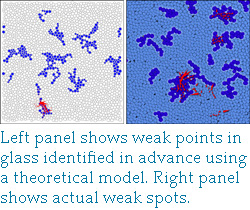Professor Shikha Nangia Named as the Milton and Ann Stevenson Endowed Professor of Biomedical and Chemical Engineering
The College of Engineering and Computer Science (ECS) has announced the appointment of Shikha Nangia as the Milton and Ann Stevenson Endowed Professor of Biomedical and Chemical Engineering. Made possible by a gift from the late Milton and Ann Stevenson,…


 A collaboration of researchers has combined a theoretical model with a first-of-its kind experiment to demonstrate a novel method for identifying “soft spots” in such materials. The findings of physicists from Syracuse University and the University of Pennsylvania, which are published online in separate studies in Physical Review Letters, may lead to a better understanding of the principles that govern the responses of materials under stress, ranging from failure of glass to earthquakes and avalanches.
A collaboration of researchers has combined a theoretical model with a first-of-its kind experiment to demonstrate a novel method for identifying “soft spots” in such materials. The findings of physicists from Syracuse University and the University of Pennsylvania, which are published online in separate studies in Physical Review Letters, may lead to a better understanding of the principles that govern the responses of materials under stress, ranging from failure of glass to earthquakes and avalanches.